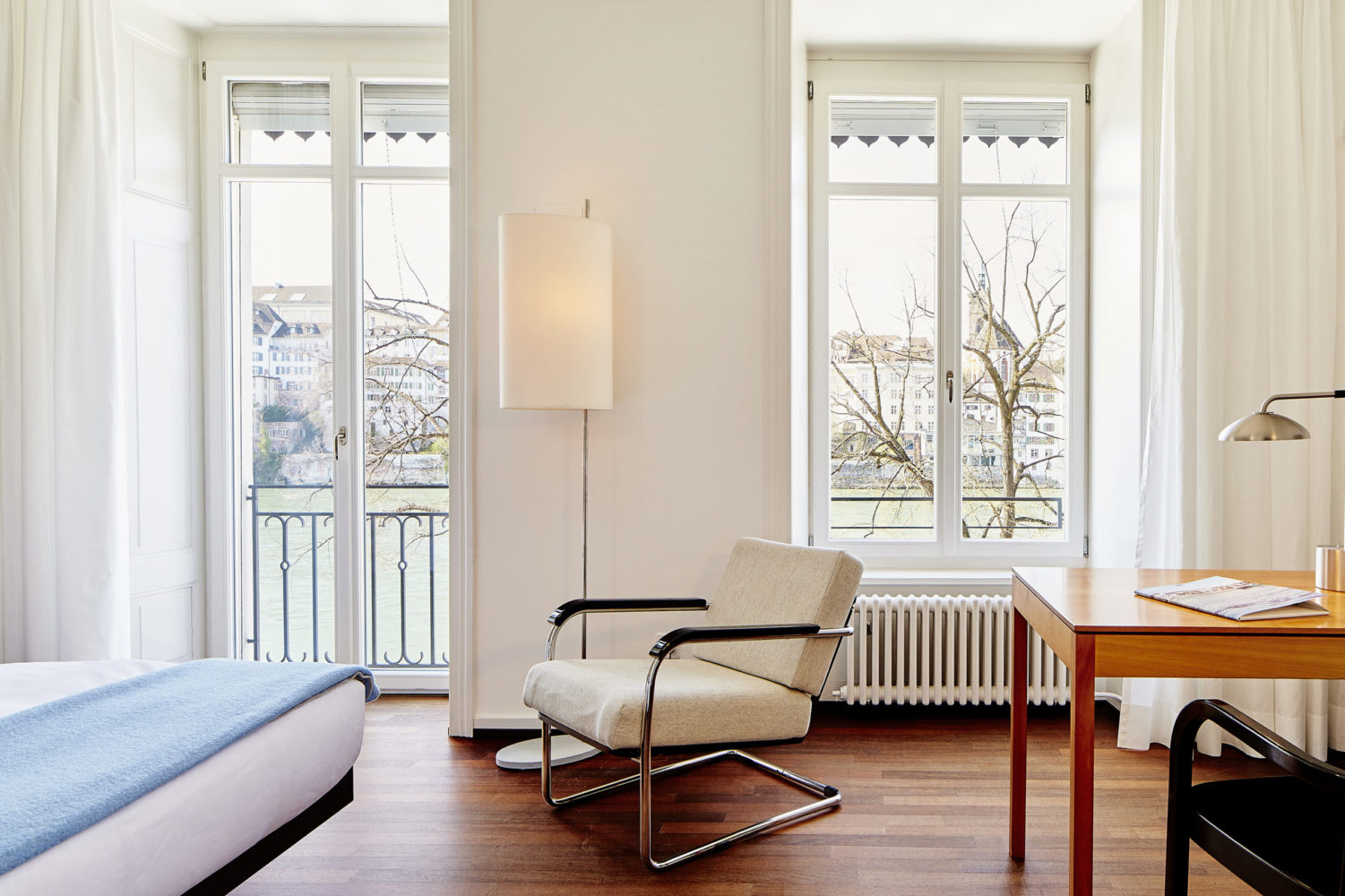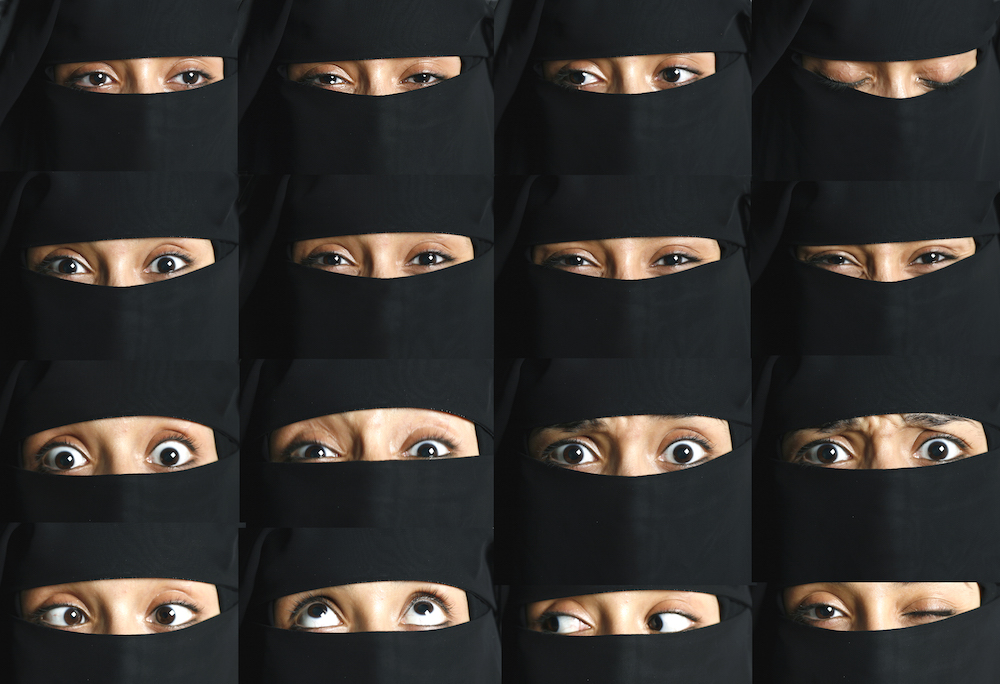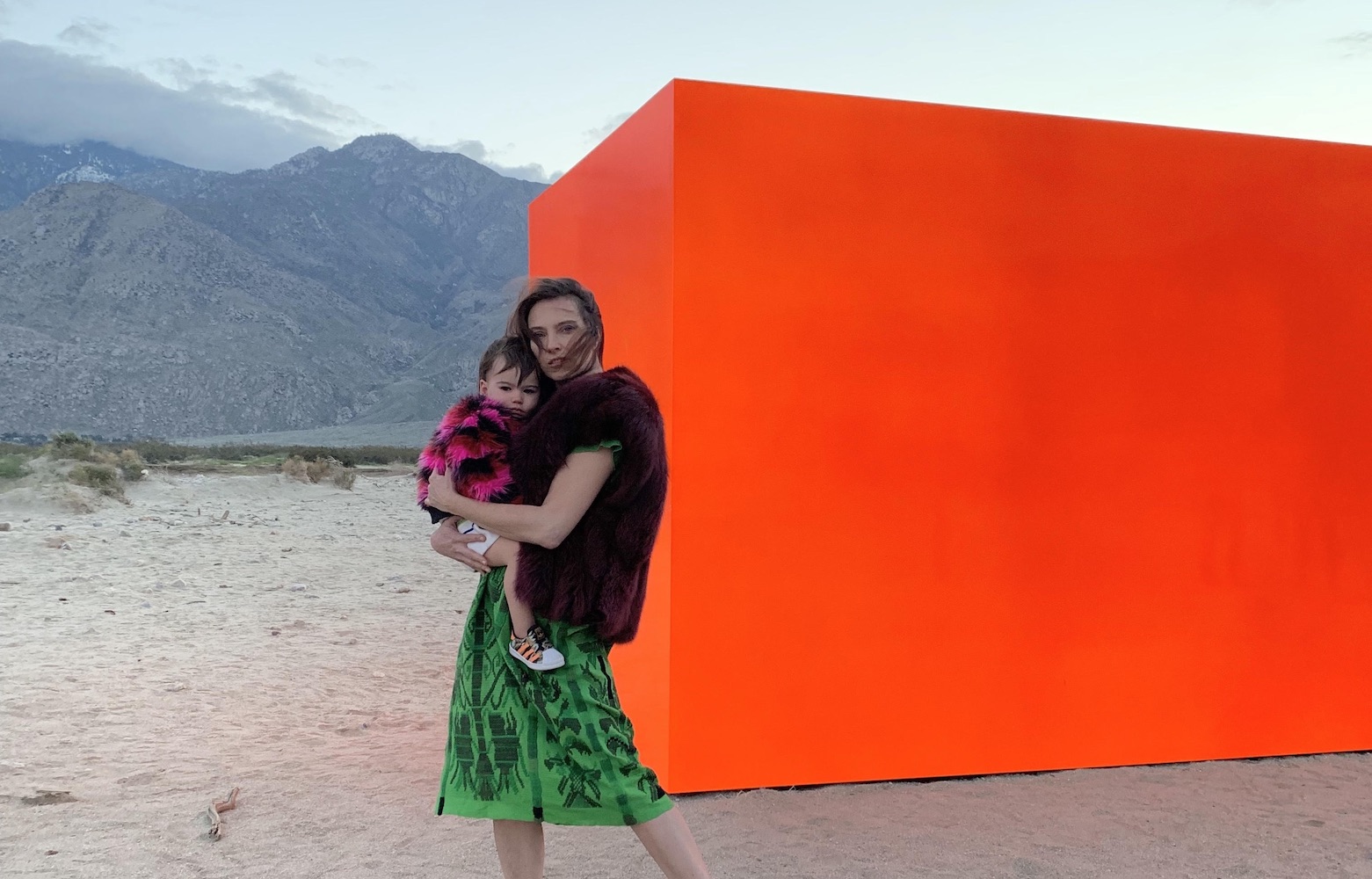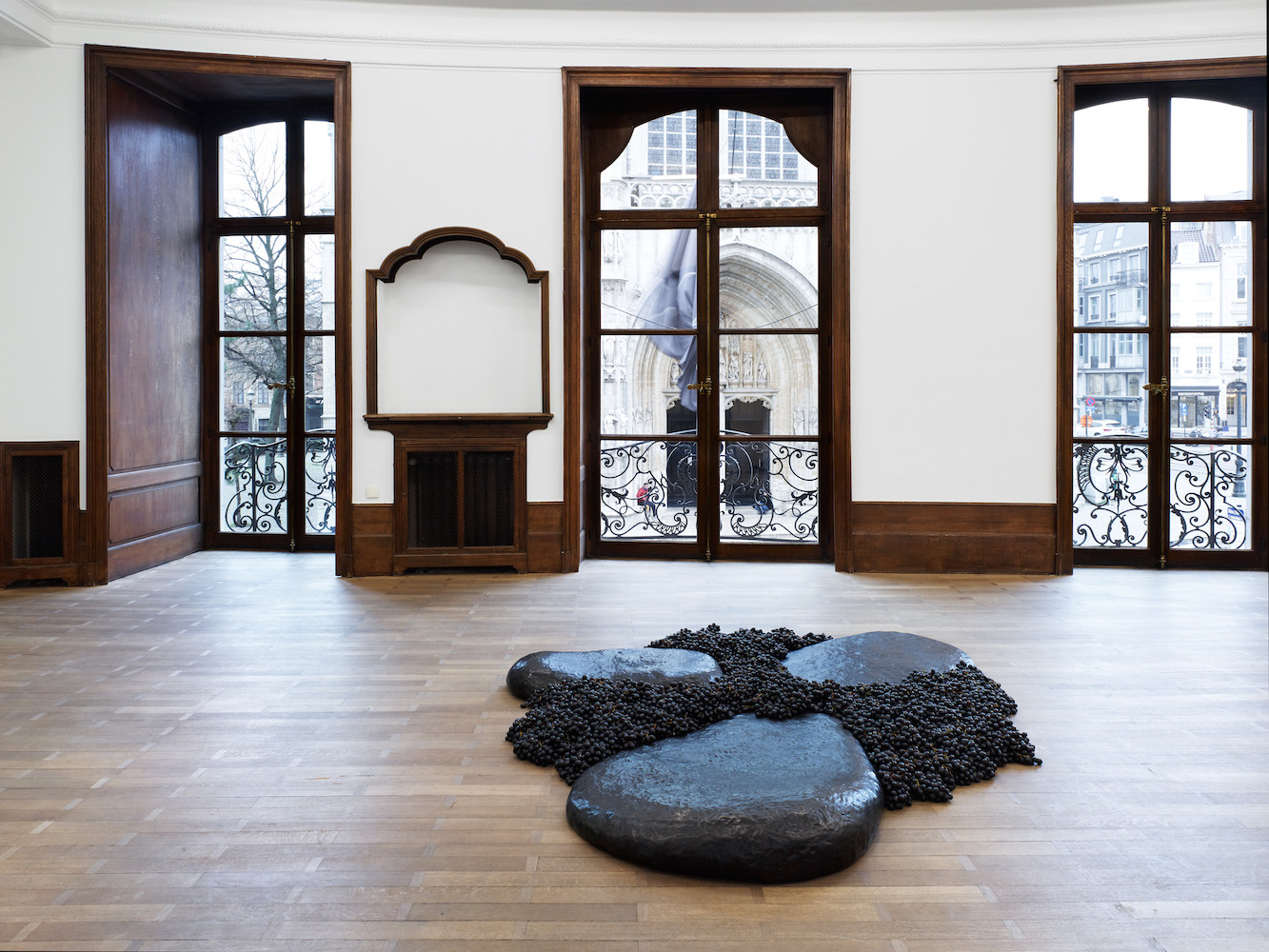Abdul Rahman Katanani’s recent exhibition, “Brainstorm,” at Saleh Barakat Gallery in Beirut invited visitors to imagine what awaits us, both in the personal everyday and the public discourse. It highlighted the urgent feeling of a need for dialogue change in Lebanon—proposed through sculptures made from petroleum barrels and barbed wire.
Katanani was born in Beirut’s Sabra refugee camp, where the Palestinian artist still has a studio. He used the materials around him—such as corrugated metal, wood, and clothes—to create his work. Whitewall spoke with Katanani, who will exhibit internationally this year in Europe, Shanghai, and the U.S., about how his practice addresses the borders around and within us.
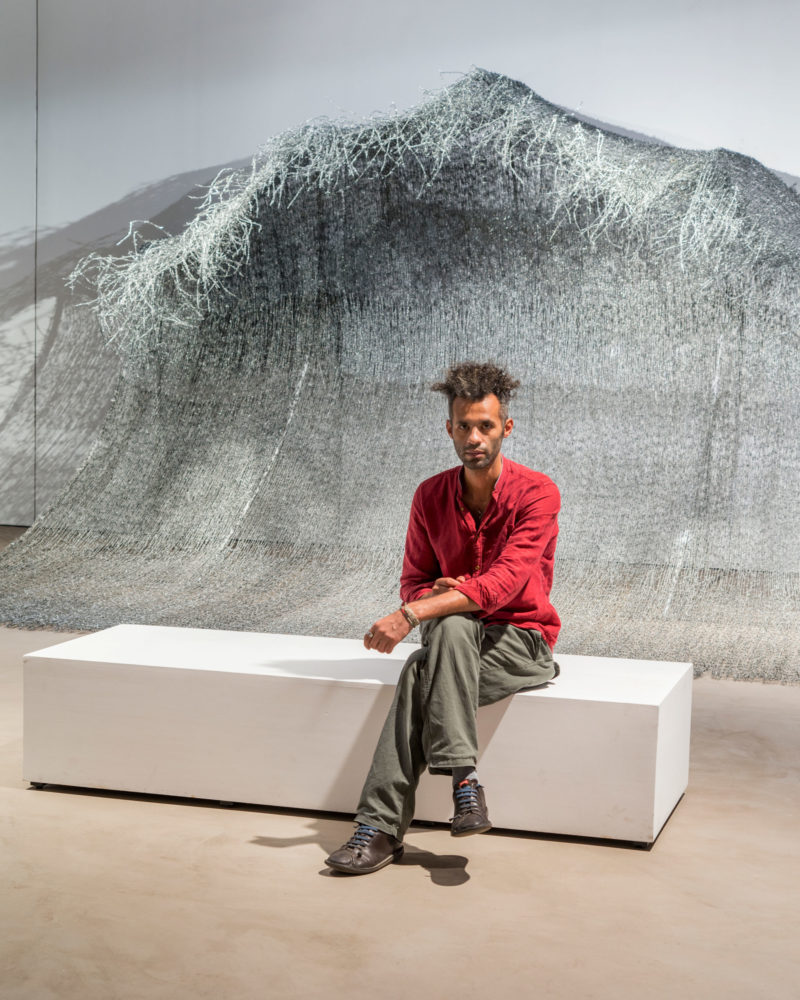
Portrait by © Paul Hennebelle.
WHITEWALL: You grew up in the Sabra refugee camp in Beirut. Tell us about some of your early interactions with art there.
ABDUL RAHMAN KATANANI: My earliest engagement with art was with caricature and graffiti. The walls of the camp served as my murals, and as the space for my caricatures.
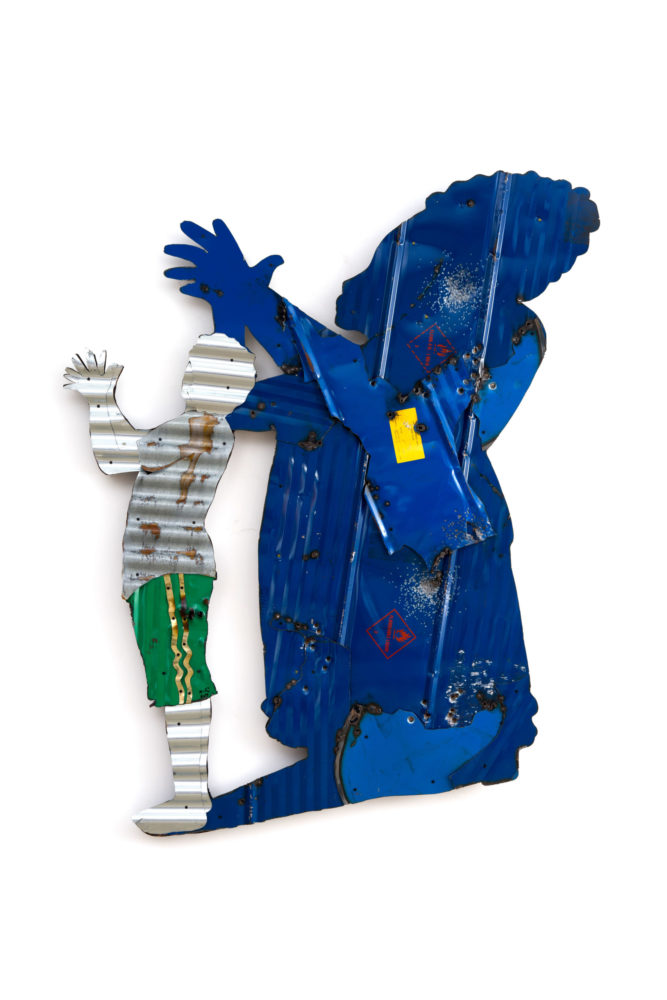
Installation view of Abdul Rahman Katanani’s “Brainstorm” (2019) at Saleh Barakat Gallery, Beirut, Lebanon, photos by © Paul Hennebelle.
WW: How did you start to create? And with what materials?
ARK: I started with producing sculptures and installations. I was collecting found materials like clothes, corrugated metal sheets, plastic pipes, barrels, wood, et cetera.
WW: At what point did you realize that creativity was a way of breaking down borders?
ARK: Once I started exhibiting outside of the camp. It was then that I felt like I broke down its barrier.
WW: You talk about borders, and how the most restrictive borders are not outside of us, but, rather, within us. What borders are you working on breaking down within you?
ARK: Every day I find a new border within me. It’s a complex process to find them, and one that requires deep, conscious attempts of working through. The inner borders are like layer upon layers of life experiences, and they need to be identified and highlighted in order to be rethought.
WW: You continue to use corrugated metal and barbed wire, and have said, “When I interact with metal, I feel like there is a relationship, a silent discussion.” Can you describe what you enjoy about working with metal? Your connection to the material?
ARK: I think that metal appeals to me because I like to work on contradiction, both in life and in art. Metal is smooth but hard to manipulate, harsh but poetic, cold but the reflection of light on it is majestic.
WW: Can you tell us about your studio space?
ARK: I had a studio in Sabra before which I have kept—it’s the place where I get inspired. It is messy and full of energy. My new studio is much larger, which allows me to be more interactive with the space and understand it better. It’s been a turning point in my practice.
WW: What is a typical day like for you there?
ARK: I don’t have a typical day! Every day is different, but mostly I sleep in the mornings and work in the afternoons.
WW: You recently had a show at Saleh Barakat Gallery, “Brainstorm.” What was the starting point for this exhibition?
ARK: The show is composed of four interconnected ideas which I have executed in sculptures and an installation. It opens with kids playing in the shadows. I used the figure of the shadows to show how the Palestinian refugees and their cause have been neglected—literally in the shadows. Then come the leaders, carved into petroleum barrels to make up the sculptures through negative space. They are the icons of the petroleum conflict who had a huge influence on the geopolitics of the Middle East and the world (figures like Carlos the Jackal and Abdel Gamal Nasser, among seven others).
In the main space of the gallery, there is an installation of the camp, which I also made out of petroleum barrels. There are two narrow alleys inside, one of them made of mirrors on each side, which reflect infinite perspective, by which I mean it reflects the psychology of the people that have been living inside the camp since 1948 and still don’t have a solution. The camp installation puts the visitors in an interactive experience, where they are confronted with the sheer physicality of the materials, and it is also a psychological experience of being locked inside a place for more than 70 years.
The final part of the show is a sculpture of a wave made in barbed wire. It is immediately visible from the exit of the camp installation and appears like it is moving toward the viewers as they exit. The wave represents decades of accumulated borders—psychological and physical—and I put the viewer in the position of a lost situation, wondering what decision to take, and that is the point. We are faced with two choices when it comes to dealing with these borders: either to be more violent because of it or to revolt against it. I think that what is happening now falls in the latter category.
WW: You asked visitors to imagine what future awaits us. What kind of interactions and futures did you see proposed?
ARK: It was tricky to figure out, but mainly people in Lebanon now feel that we need a change, though we don’t know what kind of future awaits. I think people are more hopeful, and what is great is that they are taking action, both personally in their everyday lives and publicly in their demands on the streets.



